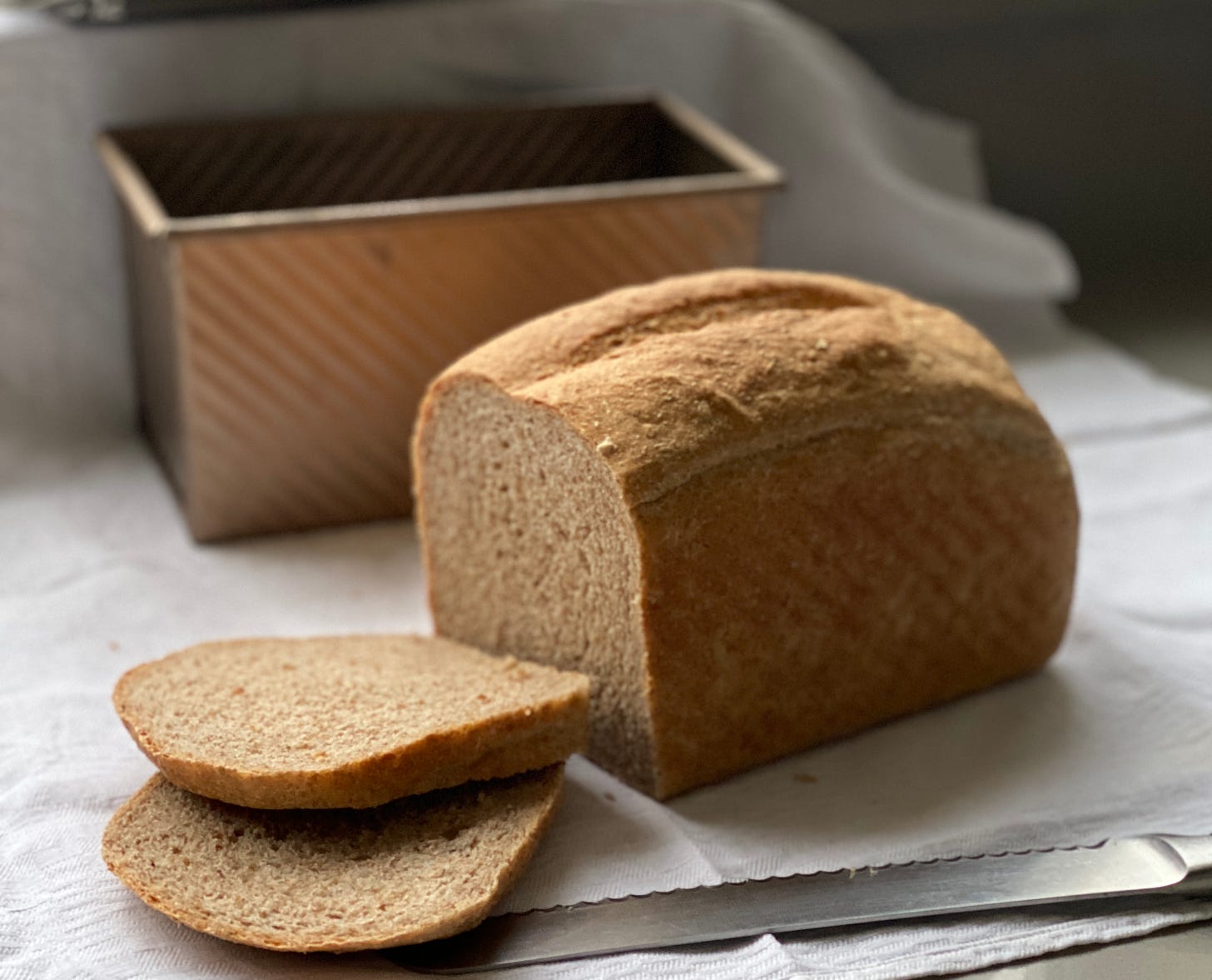Occasionally, my mother used to bake, and when she did, it was always very good. But her arthritis began to set in at an early age, and I imagine she found it difficult to knead bread.
One of the things she often made was breadcakes. Made with white flour and a little flat in appearance, compared to the fluffy, well-risen breadcakes you can make today. They were a cross between an oven bottom loaf and a flatbread. We ate them, so why wouldn't we? They were made with love, sliced and spread with butter, then jam. I don’t ever remember there being any left the next day. Her Chocolate Eclairs were a masterpiece.
I doubt there was the variety of flours available in the 1950s and 1960s that we have today, so I imagine she used the most popular flour at the time, Self-Raising or Plain flour.
I have ordered my flour in bulk for years, especially during the lockdown years. 16kg of Strong White Flour would rest on the side of my fridge as I baked my weekly supply of bread. It was during those years that I also improved my Sourdough skills. As a result, I have a regular supply of sourdough starters resting in my fridge, ready to bring out and feed when needed. I have yet to give it a name.
When I recently cleared out my cupboards, trying to find space for my latest delivery, I came across some ‘Chopped Rye’ that I used as part of a Leiths Cookery School online bread-making course for a Vollkornbrot recipe using a mix of Light and Dark Rye and Sourdough starter. It takes three days for the dough to be ready for baking, but it is worth the effort.
To make the loaf, I mixed a small amount of Chopped Rye with Strong White Flour (12.5% protein) and Stoneground Strong WholeGrain Flour (14.00% protein) to make a close textured loaf, which I baked in my trusty Pullman Loaf tin without the lid. The lid is something I have never used, as I love to see the rich golden colour of a rising dome on the top of my loaves.
A word of advice when using the Pullman Loaf tin. In its early uses, I would only grease and flour the inside of the tin, but since the lining started to come away sticking to my bread, I now grease and line it with baking parchment to prevent it from happening again.
Wholegrain Loaf with Chopped Rye
Ingredients
250g strong white flour
300g Stoneground Strong Wholegrain Flour
30g Chopped Rye
8g Fast Active dried/easy bake yeast (approx 2.5 level teaspoons)
1.5 level teaspoons of crushed sea salt.
390ml tepid water. Depending on the type of flour you use, you may need more, you may need less.
Grease and line your Pullman Bread Tin with baking parchment.
Tin size = 21.5 11.5 11cm (approx a 2lb loaf tin)
Method
Have all your ingredients ready to weigh out using accurate scales.
Step 1: Mix all the dry ingredients together in a stand mixer with the dough hook attachment. Before adding any liquid, give everything a good mix to distribute the dried yeast and salt.
Step 2: Gradually add the water. Knead slowly for about 10 minutes until you have a smooth, firm dough. Tip: Try not to add all the water in one go.
Note: Wholegrain and similar flours tend to need more water than white flours, so don’t be surprised if you need to add just a little more liquid to get the required dough texture. Likewise, if you adapt this recipe to make a loaf using strong white flour, you will need to use less liquid (15- 20 ml less) than this recipe requires.
This post, ‘Know Your Dough’ by
of gives some lightbulb moments of what it’s like working with dough, especially sourdough and the effect water has on different flours.Step 3: Turn the dough out onto a lightly floured work surface and gently knead by hand for a couple of minutes until it resembles a smooth, round ball.
Step 4: Place the dough in a clean bowl and cover with a clean tea towel. Leave to rise and double in size. Depending on how cold your kitchen is, this can take a couple of hours.
Be patient. Let it rise.
Step 5: When the dough has risen enough, turn it out onto a lightly floured surface. Give the dough a gentle second knead for a couple of minutes.
Step 6: Shape the dough into an oval and place it into the prepared Pullman Bread Tin without the lid. Cover and leave to rise until the dough reaches just above the top of the tin.
When ready to bake, preheat the oven to 200C deg fan/220C conventional oven.
Step 7: Bake in a preheated (Hot) oven without the Pullman Tin lid for about 35 minutes or until baked. I test my bread using a Thermometer. When it shows 94 degrees, it’s done. You can also tap the bottom of the loaf; if it sounds hollow, it’s done.
Leave to cool completely before slicing. And if you love eating bread with butter and jam like me, go ahead and enjoy.
Use any stale or leftover bread to make a bread and butter-pudding I promise you it’s the perfect comfort pudding.
Discover more publications and recipes in this Bread and Sourdough Index.




